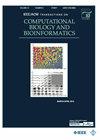SeedHit:GPU友好型预对齐过滤算法
IF 3.4
3区 生物学
Q2 BIOCHEMICAL RESEARCH METHODS
IEEE/ACM Transactions on Computational Biology and Bioinformatics
Pub Date : 2024-06-21
DOI:10.1109/TCBB.2024.3417517
引用次数: 0
摘要
下一代测序(NGS)技术产生的基因数据量的增长速度超过了摩尔定律。这就需要开发高效的 NGS 数据处理和分析算法。在计算成本高昂的分析步骤之前进行过滤,可以大大缩短 NGS 数据分析的运行时间。由于 GPU 的性能比 CPU 高出几个数量级,本文提出了一种名为 SeedHit 的 GPU 友好型预对齐过滤算法,用于快速处理 NGS 数据。受 BLAST 的启发,SeedHit 计算两个序列之间的种子命中率,以确定它们的相似性。在 SeedHit 中,基因序列中的核酸以二进制格式呈现。通过打包数据并生成适合 L1 缓存的查找表,SeedHit 对 GPU 非常友好,而且吞吐量很高。使用来自 Greengenes 的三个 16 s rRNA 数据集作为输入,当相似度为 0.9-0.99 时,SeedHit 可以平均剔除 84%-89% 的不相似序列对。在 3080 Ti 上,SeedHit 的吞吐量达到了 1 T/s(每秒 Tera 碱基)。与其他两种基于 GPU 的过滤算法(GateKeeper 和 SneakySnake)相比,SeedHit 的剔除率和吞吐量都是最高的。将 SeedHit 纳入我们的内部聚类算法 nGIA 后,修改后的 nGIA 速度比原始版本提高了 1.6-2.1 倍。本文章由计算机程序翻译,如有差异,请以英文原文为准。
SeedHit: A GPU Friendly Pre-Align Filtering Algorithm
The amount of genetic data generated by Next Generation Sequencing (NGS) technologies grows faster than Moore's law. This necessitates the development of efficient NGS data processing and analysis algorithms. A filter before the computationally-costly analysis step can significantly reduce the run time of the NGS data analysis. As GPUs are orders of magnitude more powerful than CPUs, this paper proposes a GPU-friendly pre-align filtering algorithm named SeedHit for the fast processing of NGS data. Inspired by BLAST, SeedHit counts seed hits between two sequences to determine their similarity. In SeedHit, a nucleic acid in a gene sequence is presented in binary format. By packaging data and generating a lookup table that fits into the L1 cache, SeedHit is GPU-friendly and high-throughput. Using three 16 s rRNA datasets from Greengenes as input SeedHit can reject 84%–89% dissimilar sequence pairs on average when the similarity is 0.9–0.99. The throughput of SeedHit achieved 1 T/s (Tera base per second) on 3080 Ti. Compared with the other two GPU-based filtering algorithms, GateKeeper and SneakySnake, SeedHit has the highest rejection rate and throughput. By incorporating SeedHit into our in-house clustering algorithm nGIA, the modified nGIA achieved a 1.6–2.1 times speedup compared to the original version.
求助全文
通过发布文献求助,成功后即可免费获取论文全文。
去求助
来源期刊
CiteScore
7.50
自引率
6.70%
发文量
479
审稿时长
3 months
期刊介绍:
IEEE/ACM Transactions on Computational Biology and Bioinformatics emphasizes the algorithmic, mathematical, statistical and computational methods that are central in bioinformatics and computational biology; the development and testing of effective computer programs in bioinformatics; the development of biological databases; and important biological results that are obtained from the use of these methods, programs and databases; the emerging field of Systems Biology, where many forms of data are used to create a computer-based model of a complex biological system

 求助内容:
求助内容: 应助结果提醒方式:
应助结果提醒方式:


